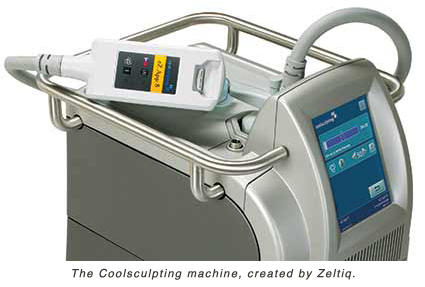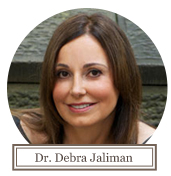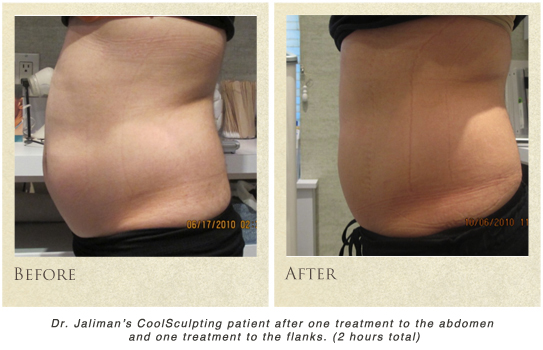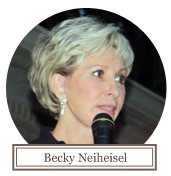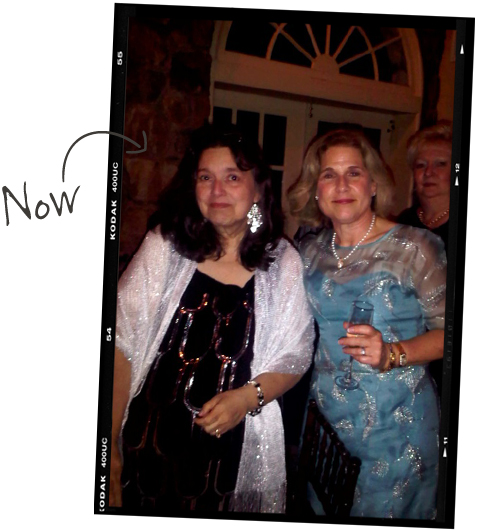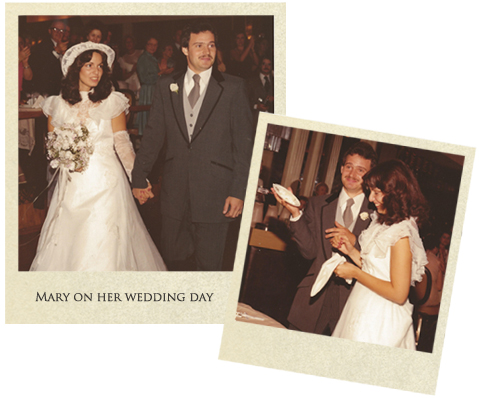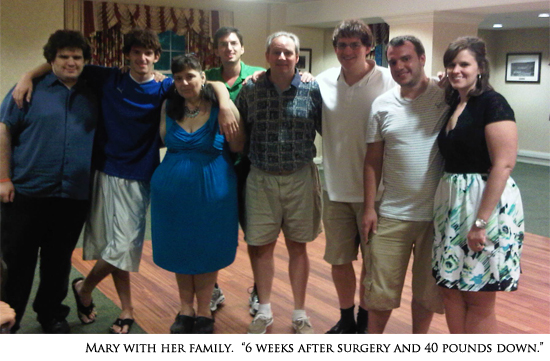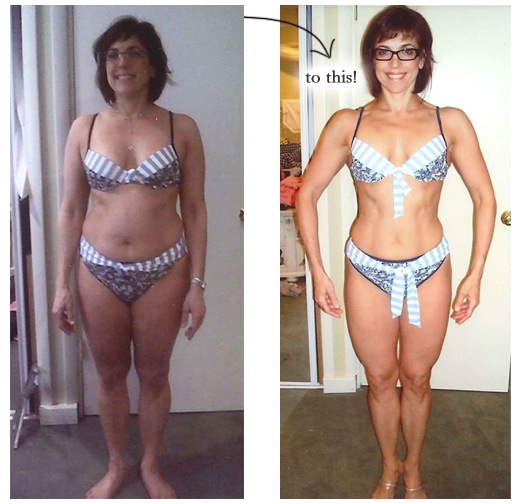
The Dukan Diet helped one famous FOF shed the pounds, but is it right for the rest of us? FOF investigates.

When Kate Middleton and her FOF mother, Carole, arrived at the Royal wedding this past April, BBC newscasters couldn’t stop talking about two things: their clothes and their weight loss.
Carole–who had lost 2 dress sizes–publicly credited her svelte new physique to 69-year-old French diet doctor, Pierre Dukan. Kate has never revealed her own diet plan, although rumors swirl that she used Dukan as well.
Since the wedding, Dukan’s book, The Dukan Diet, has sold millions of copies and been translated into 14 languages. “I am a hopeless romantic, so of course I watched the royal wedding,” says FOF Patricia Hancock, a lifelong yo-yo dieter who bought the book in April and has since lost over 30 pounds following Dukan’s advice.
The diet has been touted by celebs including Salma Hayek and Jennifer Lopez. But it’s also been controversial, with some medical experts alternately calling it everything from “unaffective” to “dangerous” in the press.
What’s the truth? Here, FOF presents the facts and talks to FOF Patricia about her experience.
For a chance to win your own copy of The Dukan Diet, read on, and then tell us in the comments below, would you try this diet? (3 FOFs will win!)
 Dr. Pierre Dukan, MD, began his general medical practice over 35 years ago. According to his book, he became interested in nutrition after an overweight patient asked for a diet plan that didn’t restrict meat. Dukan advised the man to consume nothing but lean meat and water for five days. In that time, the patient lost 12 pounds. Encouraged, Dukan began studying nutrition in an attempt to create a diet that would help his overweight patients lose weight permanently–without feeling deprived. He spent the next 35 years perfecting his plan and gaining a reputation as a uniquely effective “diet doctor” in France. Today, his plan is consists of 4 phases:
Dr. Pierre Dukan, MD, began his general medical practice over 35 years ago. According to his book, he became interested in nutrition after an overweight patient asked for a diet plan that didn’t restrict meat. Dukan advised the man to consume nothing but lean meat and water for five days. In that time, the patient lost 12 pounds. Encouraged, Dukan began studying nutrition in an attempt to create a diet that would help his overweight patients lose weight permanently–without feeling deprived. He spent the next 35 years perfecting his plan and gaining a reputation as a uniquely effective “diet doctor” in France. Today, his plan is consists of 4 phases:

Phase 1: Dukan calls this “The Attack” phase, during which you jump-start your weight loss by spending anywhere from 2 to 7 days (depending on your start weight) eating only from a group of 68 high-protein foods, including lean meats, fish, tofu, Greek yogurt and eggs. You’re also required to eat 1.5 tablespoons of oat bran a day to help you feel full. Unlike The Atkins Diet, with Dukan “you are not allowed fatty meats and cheese,” says Simone Gloger, a registered nutritionist who recommends the Dukan diet to her own patients. “Saturated fats found in these foods can cause cardiovascular disease. Atkins is high protein and high fat. Dukan is high protein, low fat and low carb.”
During this first phase, you also calculate your “true” weight–a number based on your age, height and dieting history. “This differs for everyone,” says Simone Gloger, “It’s a realistic number that is actually maintainable for life.” (You can calculate your “True Weight,” here.)
FOF Trisha, 57, was about 25 pounds overweight when she started the diet earlier this year. Heavy since she was a young girl, (“I grew up being called ‘Patty Fatty’”) she had tried everything from Weight Watchers to Atkins to aerobics, but was never able to keep the weight off for good. At just 4’11”, Trisha’s top weight was 181. When she started the Dukan diet, she was about 145. Today, 7 months later, she weighs 107.
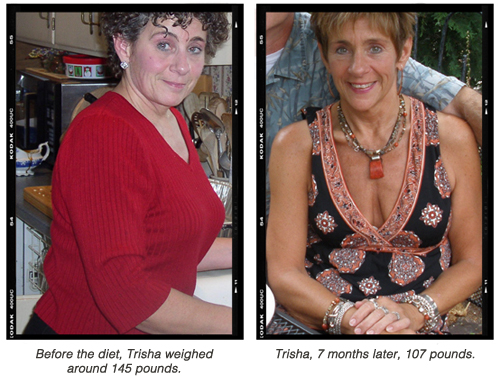
Trisha’s “phase 1” lasted 5 days, during which she mostly ate eggs, chicken and fish. “I love protein, so that was not a problem,” she says. “And it wasn’t very long–just Monday to Friday.”
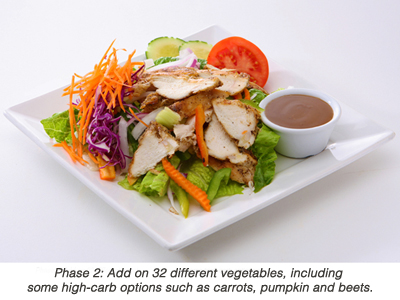
Phase 2: During “The Cruise Phase,” you add on 32 different vegetables, including some high-carb options such as carrots, pumpkin and beets. “You’re on this until you reach your true weight,” says Gloger. “Typically, that’s about 3 days for every pound you want to lose.” So if you wanted to lose 30 pounds, you’d be in this phase for about 3 months. According to Dukan, the diet makes up for lack of variety by allowing you to eat as much as you want in any combination you prefer.
This type of high-protein, low-carb eating is especially effective for FOFs, says Gloger. “As you age and enter menopause, your body loses muscle mass, your metabolism slows and you gain weight. Eating protein speeds your metabolism and helps you build muscle. It also helps reduce water retention and improves collagen production–which makes your skin look better.”
“The hardest part for me was not eating cheese,” says Trisha of her Cruise Phase. “But I liked that I could eat as much protein as I wanted. When I did Weight Watchers, I was only allowed 18 points. I was hungry and thinking about food constantly. On Dukan, my husband and I would cook out, and I would eat a humongous, juicy hamburger, and the next morning I would have lost weight.”
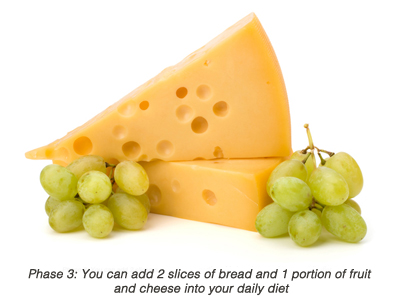
Phase 3, “Consolidation,” starts once you’ve reached your “true weight.” It is designed to reintroduce a variety of foods back into your diet without causing the rebound weight gain that typically occurs after losing a lot of weight. You can add 2 slices of bread and 1 portion of fruit and cheese into your daily diet as well as 2 servings of carbs and 2 “celebration” meals per week. You remain in this phase for 5 days for every one pounds you’ve lost. “This phase is about learning how to eat properly,” says Gloger. “You can go out to dinner, enjoy wine and bread and fruit—but all within reason.”
Both Gloger and Trisha point out that they exercised some personal discretion during this phase–not following the rules exactly, but staying within a “safe” zone. “If you’re wheat or gluten intolerant, you can substitute the wheat bread for other grains,” says Gloger.
“I didn’t always give up my wine,” says Trisha. “But I’d have half a glass in the evening instead of a full glass.” It was during this phase that Trisha developed her food routine, a daily menu that she says has worked great for her. “I’m not a very creative person–I don’t come up with fancy recipes. I get up every morning and have Greek yogurt with fruit, followed by an apple or some other snack around 10. For lunch I’ll have tofu mixed with tuna and some little pita pockets or maybe a hard-boiled egg sandwich. In the evening I might have salmon with lots of salad, some bread and wine.”
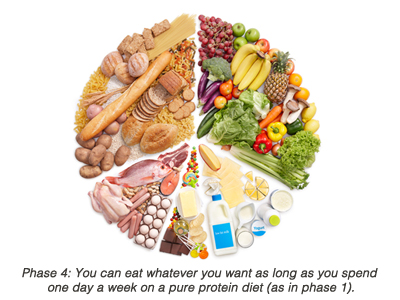
Phase 4, the permanent stabilization phase, is designed to last for, well . . . the rest of your life. And it’s surprisingly non-restrictive. You can eat whatever you want as long as you spend one day a week on a pure protein diet (as in phase 1), continue to eat your 3 tablespoons of oat bran every day, and take the stairs instead of escalators and elevators. So what’s to keep you from eating pizza and ice cream for every meal? Both Trisha and Gloger insist that just isn’t a problem.
“By the time someone has finished the first three phases, they’ve really changed,” says Gloger. “They’ve learned how to eat so that they feel better and look better and they don’t want to give that up. Also, after they eat indulgent foods, they don’t feel good.”
“I don’t want to go back to not feeling good,” confirms Trisha. “I love being able to go into the store and pick out a size 2–my whole life I was looking at sizes from 13-18. And I find that when I indulge, I really feel it. If I have a cupcake for example, I feel sick afterwards. I don’t want to overeat.”
While both Trisha and Gloger insist the diet could work “for anyone,” Trisha does admit that it was particularly tailored to her: “I love meat. I’d rather have a big juicy steak than a slice of pizza. I’m also patient, and I like to do things slowly and carefully, so I was willing to read the entire book and learn the science behind it. It made sense to me. I would say to anyone who is considering this diet, read the book first. Really read it. If it makes sense to you, it will work for you.”
For a chance to win your own copy of The Dukan Diet, tell us in the comments below, would you try this diet? (3 FOFs will win!)















